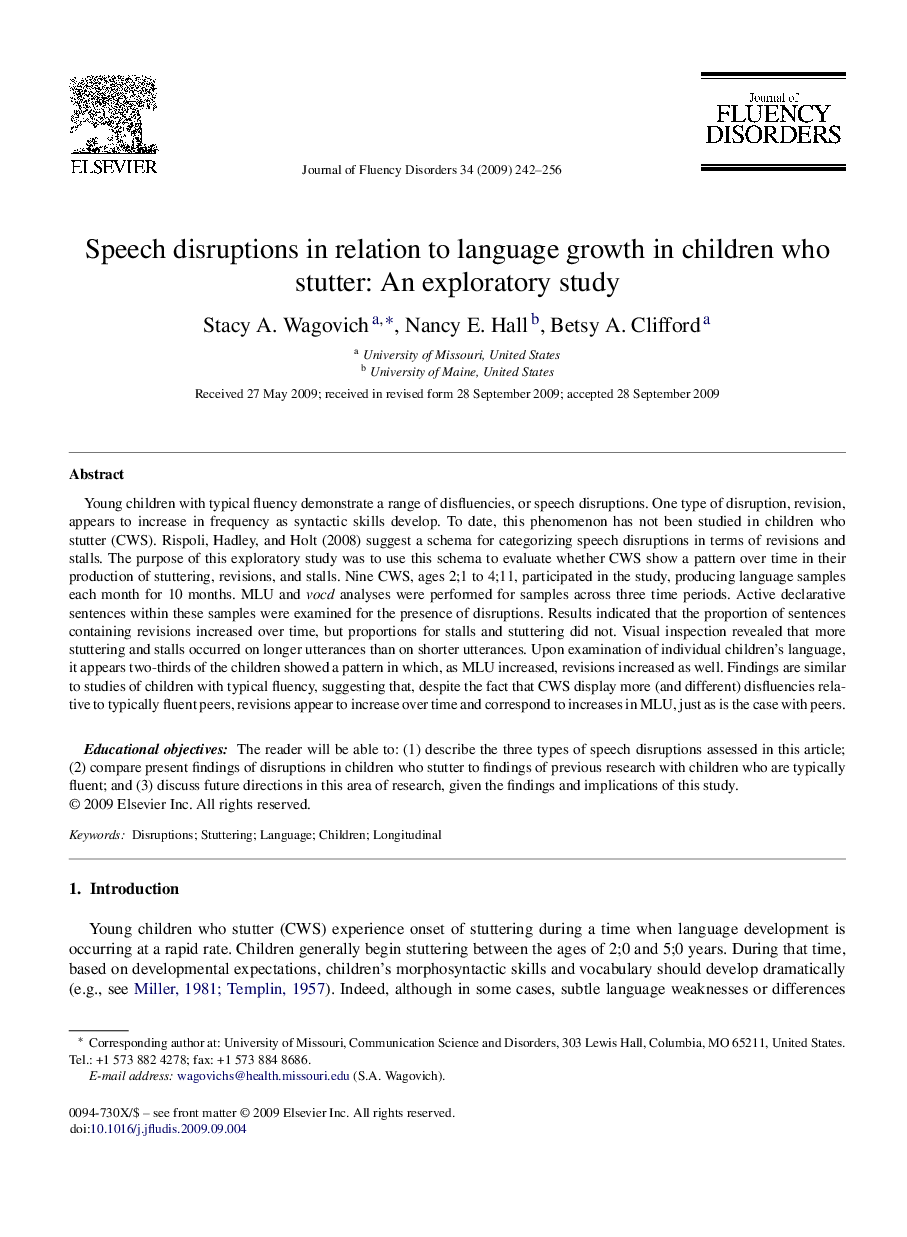| Article ID | Journal | Published Year | Pages | File Type |
|---|---|---|---|---|
| 911479 | Journal of Fluency Disorders | 2009 | 15 Pages |
Young children with typical fluency demonstrate a range of disfluencies, or speech disruptions. One type of disruption, revision, appears to increase in frequency as syntactic skills develop. To date, this phenomenon has not been studied in children who stutter (CWS). Rispoli, Hadley, and Holt (2008) suggest a schema for categorizing speech disruptions in terms of revisions and stalls. The purpose of this exploratory study was to use this schema to evaluate whether CWS show a pattern over time in their production of stuttering, revisions, and stalls. Nine CWS, ages 2;1 to 4;11, participated in the study, producing language samples each month for 10 months. MLU and vocd analyses were performed for samples across three time periods. Active declarative sentences within these samples were examined for the presence of disruptions. Results indicated that the proportion of sentences containing revisions increased over time, but proportions for stalls and stuttering did not. Visual inspection revealed that more stuttering and stalls occurred on longer utterances than on shorter utterances. Upon examination of individual children's language, it appears two-thirds of the children showed a pattern in which, as MLU increased, revisions increased as well. Findings are similar to studies of children with typical fluency, suggesting that, despite the fact that CWS display more (and different) disfluencies relative to typically fluent peers, revisions appear to increase over time and correspond to increases in MLU, just as is the case with peers.Educational objectivesThe reader will be able to: (1) describe the three types of speech disruptions assessed in this article; (2) compare present findings of disruptions in children who stutter to findings of previous research with children who are typically fluent; and (3) discuss future directions in this area of research, given the findings and implications of this study.
